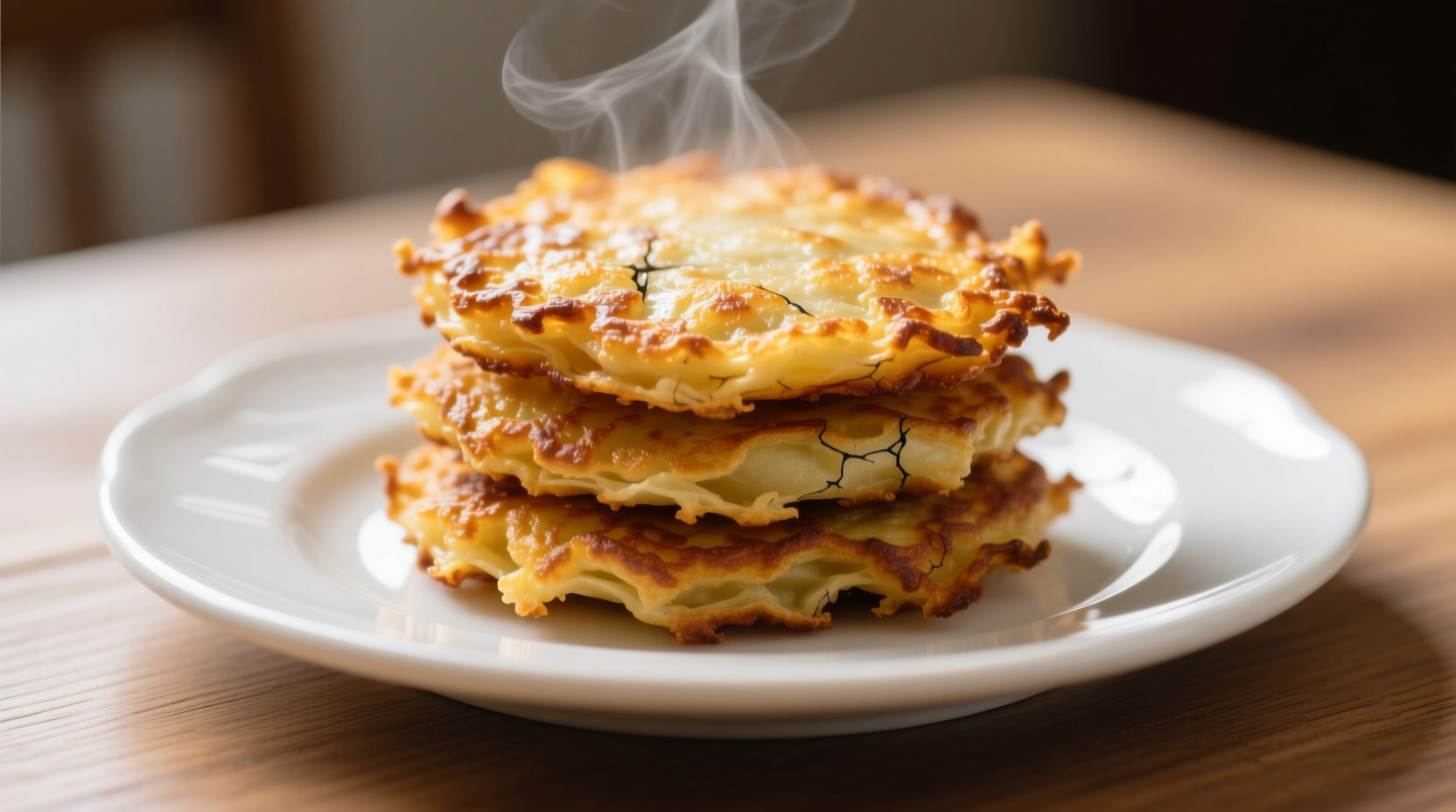Why Potato Cakes Deserve a Spot in Your Recipe Collection
Nothing transforms humble potatoes into culinary magic quite like perfectly executed potato cakes. These golden patties deliver that irresistible contrast of textures—crisp, lacy edges giving way to a soft, flavorful interior—that makes them beloved across continents. Whether you're seeking a comforting breakfast side, an elegant appetizer, or a creative way to use leftover mashed potatoes, mastering potato cakes unlocks endless possibilities.
The Essential Potato Selection Process
Not all potatoes behave the same when transformed into cakes. The starch content dramatically impacts your final result:
- Russet potatoes (Idaho): High starch content creates the crispiest exterior but requires careful moisture management
- Yukon Gold: Medium starch provides balanced texture with natural buttery flavor
- Red potatoes: Lower starch yields more cohesive cakes but less crispness
Professional chefs consistently recommend using starchy russets for classic crispy potato cakes, but blending with waxy varieties can create interesting hybrid textures. Always refrigerate grated potatoes for 15 minutes before squeezing—this firms the starch granules for more effective moisture removal.
Step-by-Step: Crafting Perfect Potato Cakes
Follow this professional technique for consistently excellent results:
- Prepare potatoes: Peel and coarsely grate 2 lbs russet potatoes using the large holes of a box grater
- Remove moisture: Place grated potatoes in a clean kitchen towel and squeeze firmly over a bowl (save liquid for later)
- Extract starch: Let potato liquid settle for 10 minutes, then pour off water to reveal pure starch—mix back into potatoes
- Combine ingredients: Add 1 egg, 2 tbsp flour, 1 tsp salt, and optional scallions or herbs to potatoes
- Form patties: Shape into 3-inch rounds, 1/2-inch thick, pressing firmly to ensure cohesion
- Fry properly: Heat 1/4 inch oil to 350°F (175°C) and cook 4-5 minutes per side until deep golden brown
The critical moment comes when you resist the urge to flip too soon—wait until edges turn golden and release easily from the pan. This patience creates that essential crisp crust rather than a greasy, broken patty.

Global Potato Cake Variations Compared
While the basic concept remains consistent, cultural interpretations create remarkable diversity. This comparison reveals key differences in preparation and presentation:
| Variation | Origin | Key Ingredients | Cooking Method | Serving Tradition |
|---|---|---|---|---|
| Boxty | Ireland | Grated & mashed potatoes, buttermilk | Griddled or pan-fried | Breakfast with bacon or as bread substitute |
| Gamja-jeon | Korea | Grated potatoes, kimchi, scallions | Thinly pan-fried | Anju (food with alcohol), often with dipping sauce |
| Latke | Eastern Europe | Grated potatoes, onions, egg | Deep-fried patties | Chanukah tradition with applesauce or sour cream |
| Tortilla de patata | Spain | Mashed potatoes, eggs, onions | Omelet-style frying | Tapas served at room temperature |
Historical Evolution of Potato Cakes
Potato cakes emerged as a practical solution to potato abundance following the tuber's introduction to Europe from South America. Historical records show their development followed this trajectory:
- 1570s: Potatoes introduced to Europe from Peru, initially viewed with suspicion
- 1700s: Potato cultivation expands across Ireland and Eastern Europe during food shortages
- 1840s: Irish Potato Famine drives mass emigration, spreading potato-based recipes globally
- Early 1900s: Potato cakes become established in American diner culture as affordable comfort food
- Present day: Elevated from humble fare to gourmet menu item in restaurants worldwide
According to agricultural historians at the International Potato Center, potato cake variations developed independently across multiple cultures as communities sought ways to preserve and enhance this versatile staple crop. The basic technique of grating, binding, and frying provided an efficient method to transform potatoes into portable, satisfying meals.
Troubleshooting Common Potato Cake Problems
Even experienced cooks encounter challenges with potato cakes. Understanding these context-specific limitations helps achieve consistent results:
When Moisture Management Fails
Potato cakes that fall apart typically suffer from excess moisture. This occurs most frequently when:
- Using high-moisture potato varieties without proper draining
- Skipping the critical step of extracting starch from potato liquid
- Adding wet ingredients like raw onions without compensating
Oil Temperature Challenges
Oil that's too cool creates greasy cakes that absorb excessive fat, while oil that's too hot burns the exterior before the interior cooks. The ideal temperature range (350-375°F) varies based on:
- Patty thickness (thicker requires slightly lower temperature)
- Ingredient composition (more binders tolerate higher heat)
- Batch size (adding too many patties at once drops oil temperature)
Advanced Techniques for Culinary Excellence
Once you've mastered the basics, these professional methods elevate your potato cakes:
Flavor Layering Strategies
Build complexity through strategic ingredient additions:
- Add caramelized onions during the last minute of potato cooking for sweet depth
- Incorporate fresh herbs like dill or chives just before forming patties
- Experiment with smoked paprika or cumin for global flavor profiles
Presentation Innovations
Transform simple potato cakes into restaurant-worthy dishes:
- Create mini versions as elegant appetizers
- Top with smoked salmon and crème fraîche for brunch sophistication
- Serve stacked with apple compote and chive oil for visual appeal
Storage and Reheating Guidelines
While best served fresh, properly stored potato cakes maintain quality:
- Refrigeration: Store cooled cakes in airtight container with parchment between layers for up to 3 days
- Freezing: Flash freeze individual cakes before transferring to freezer bags (up to 2 months)
- Reheating: Restore crispness by baking at 400°F (200°C) for 8-10 minutes rather than microwaving
Food science research from the Culinary Institute of America confirms that oven reheating preserves texture significantly better than microwave methods, which trap steam and soften the desirable crisp exterior.











 浙公网安备
33010002000092号
浙公网安备
33010002000092号 浙B2-20120091-4
浙B2-20120091-4